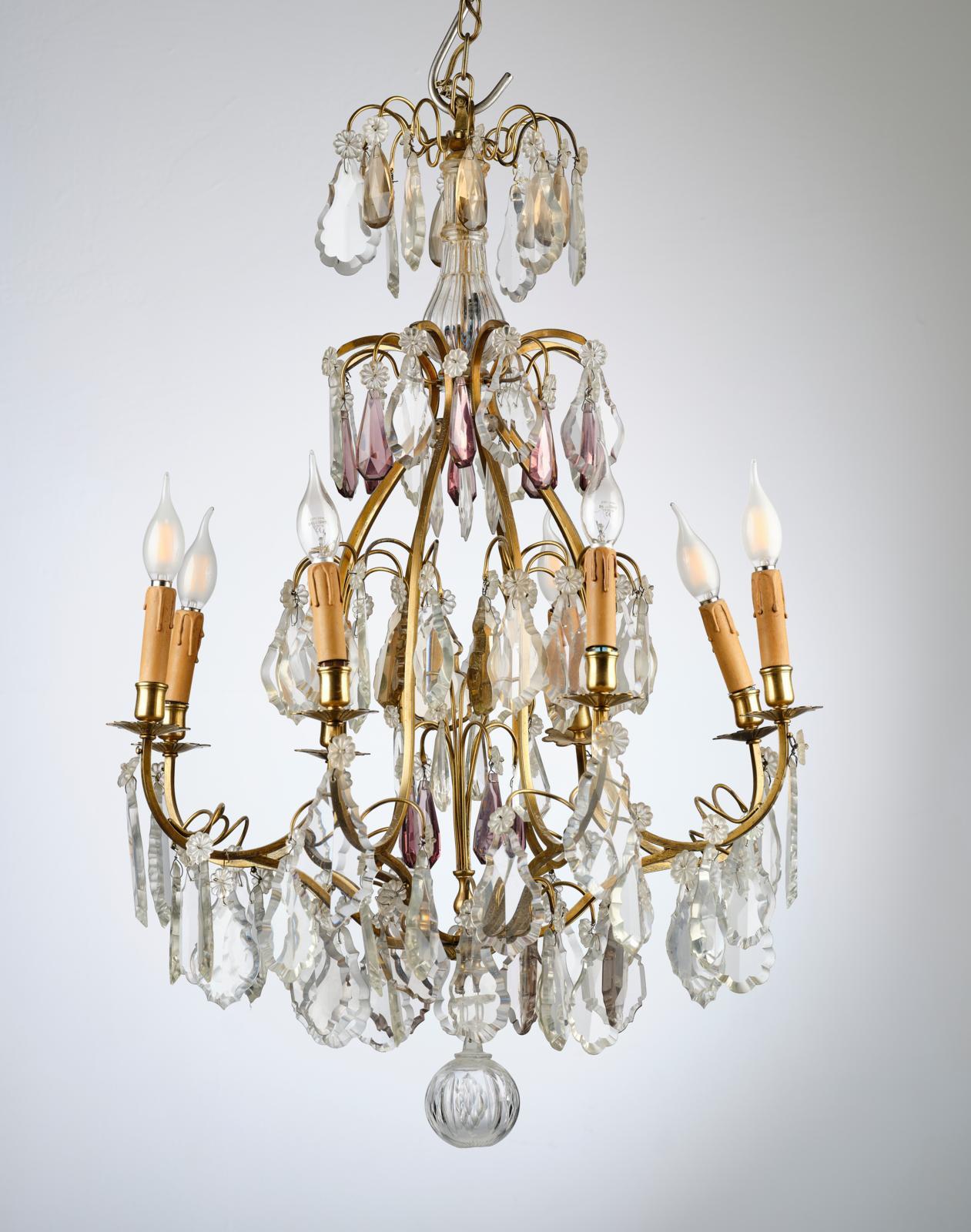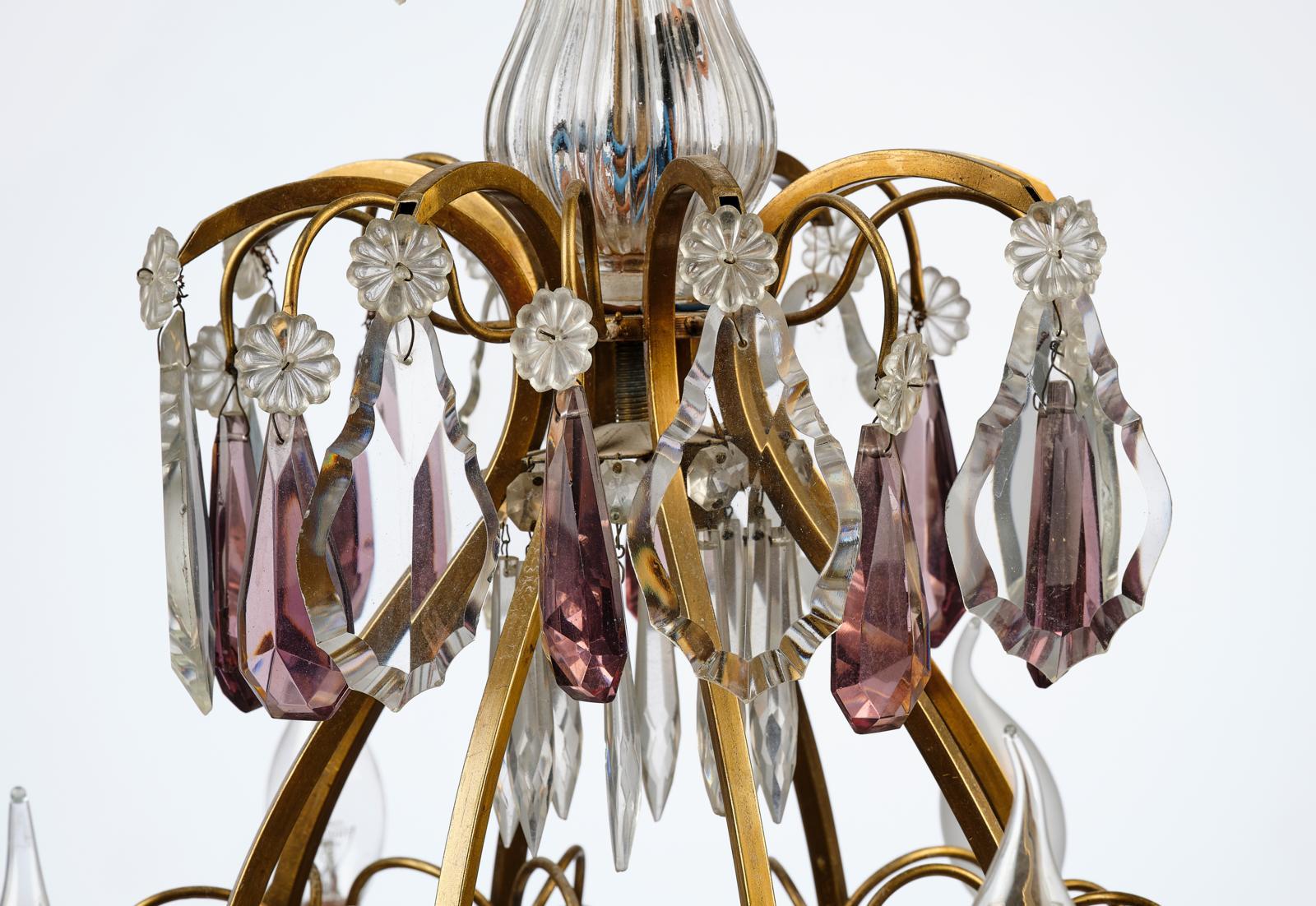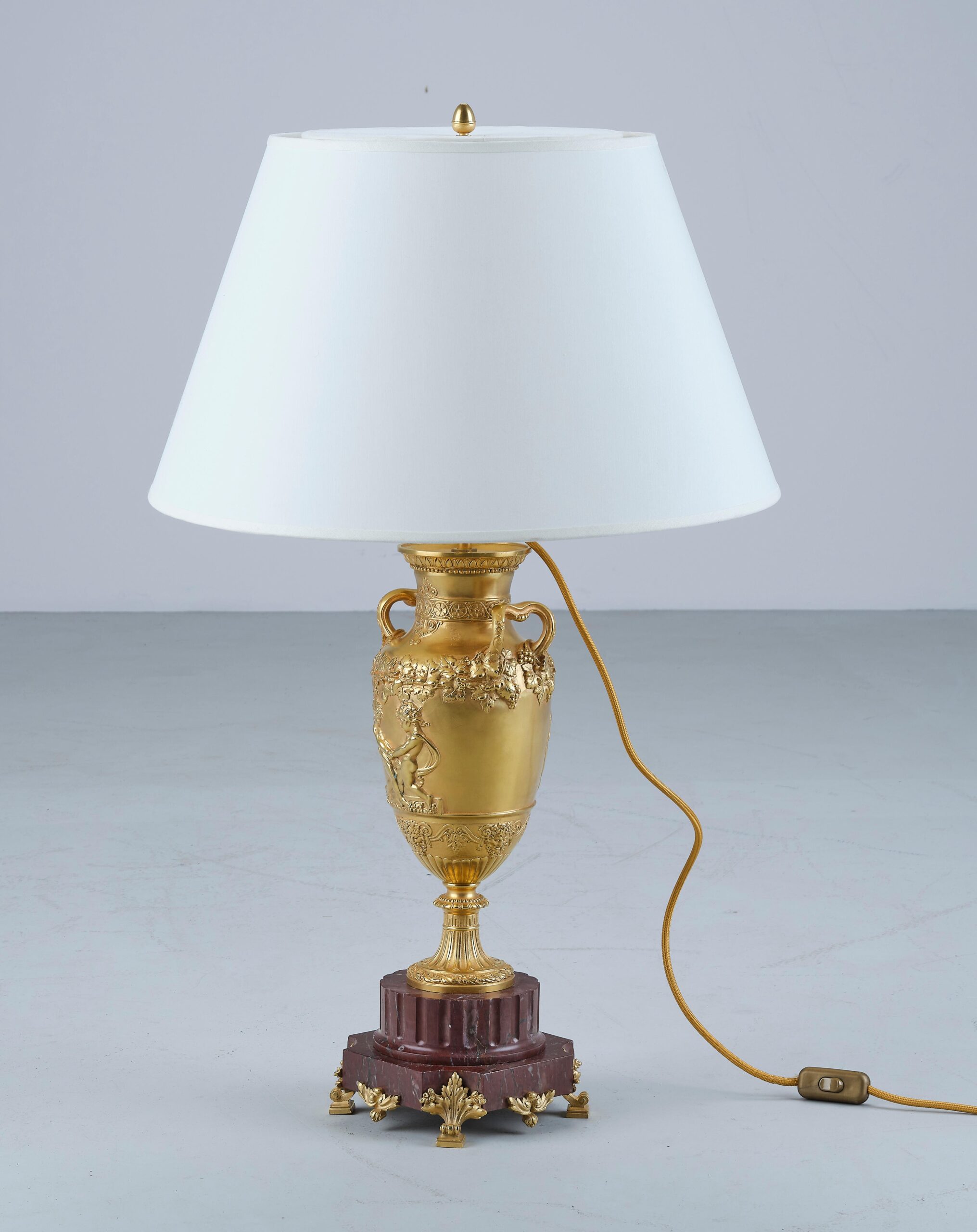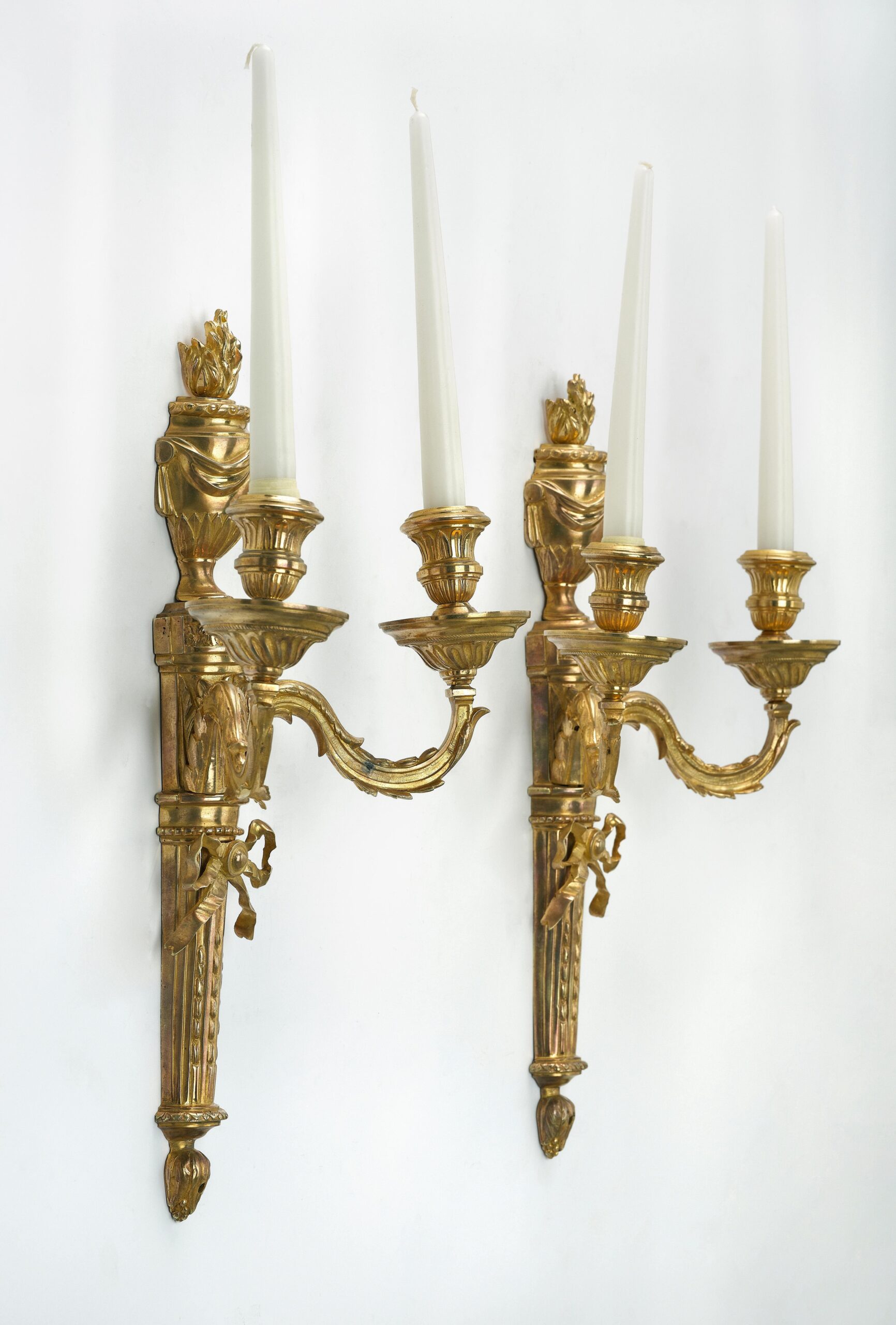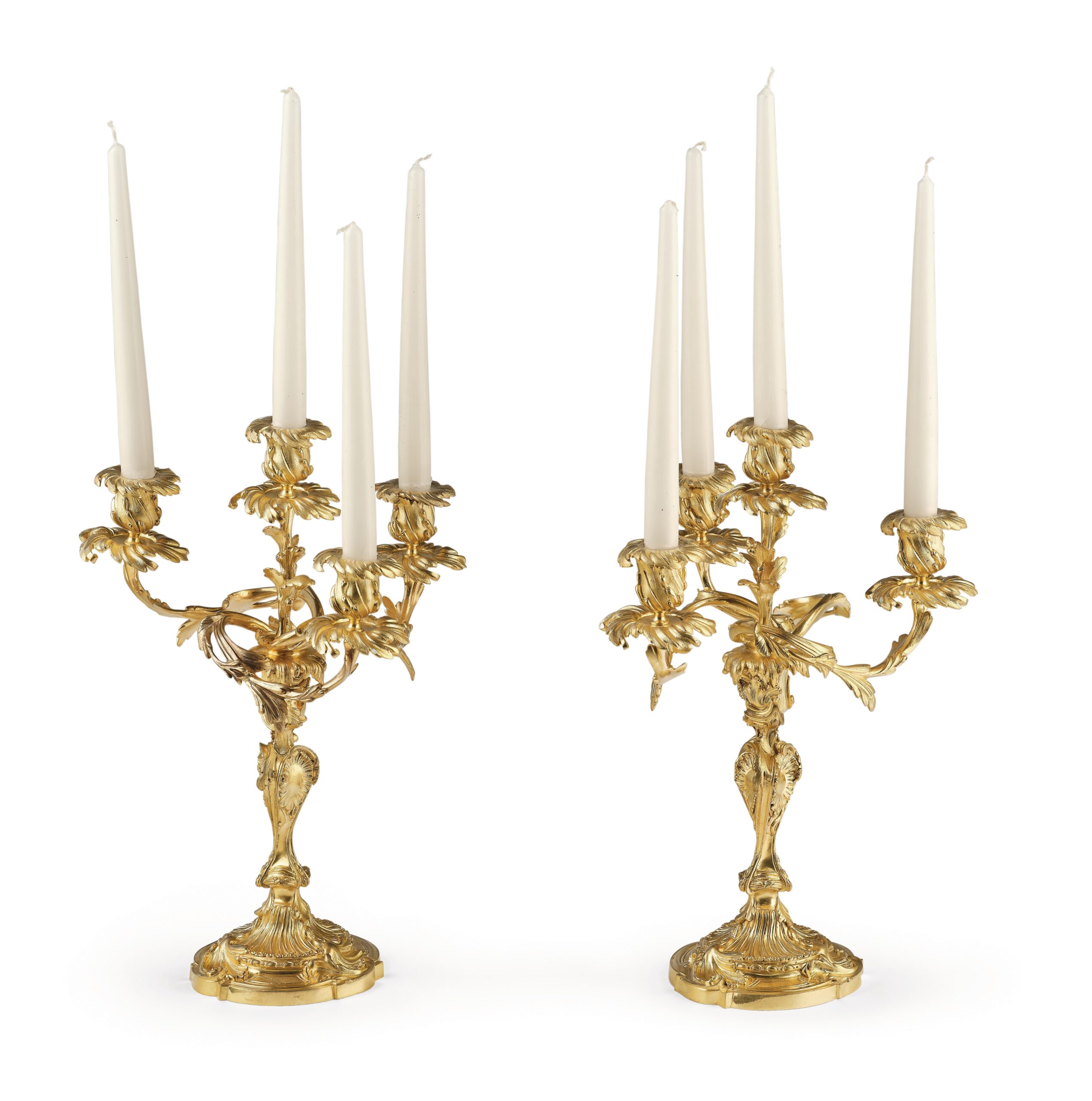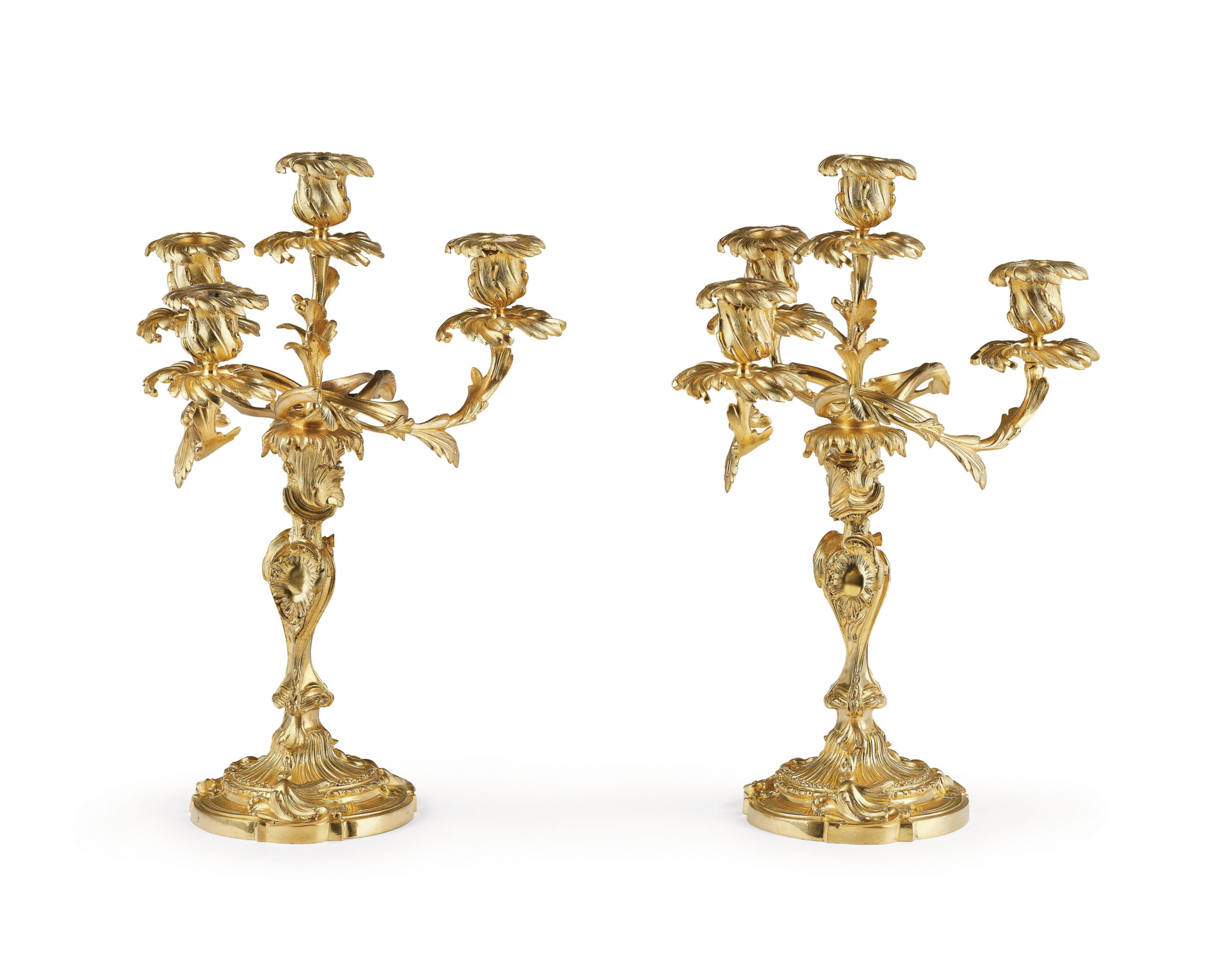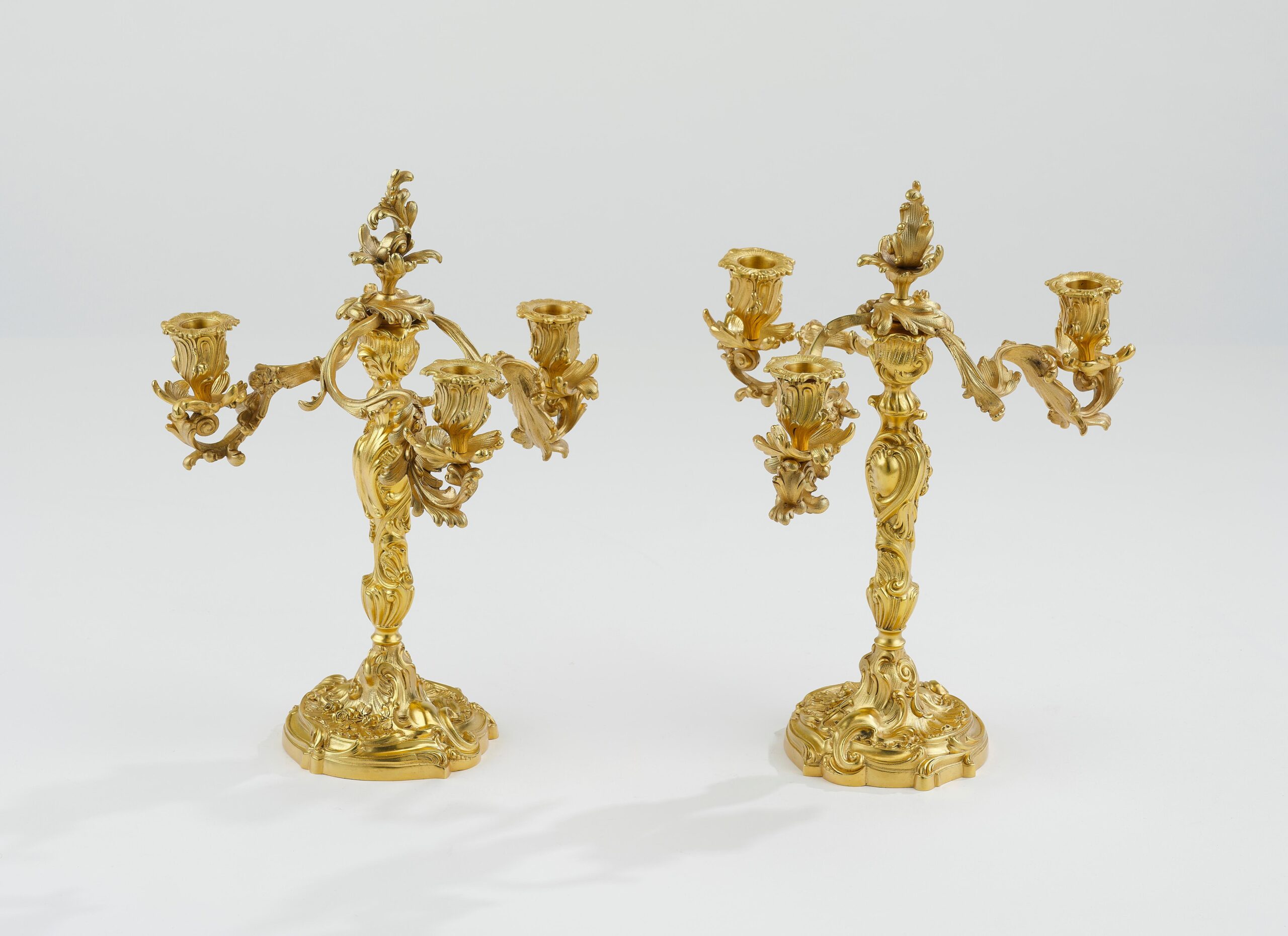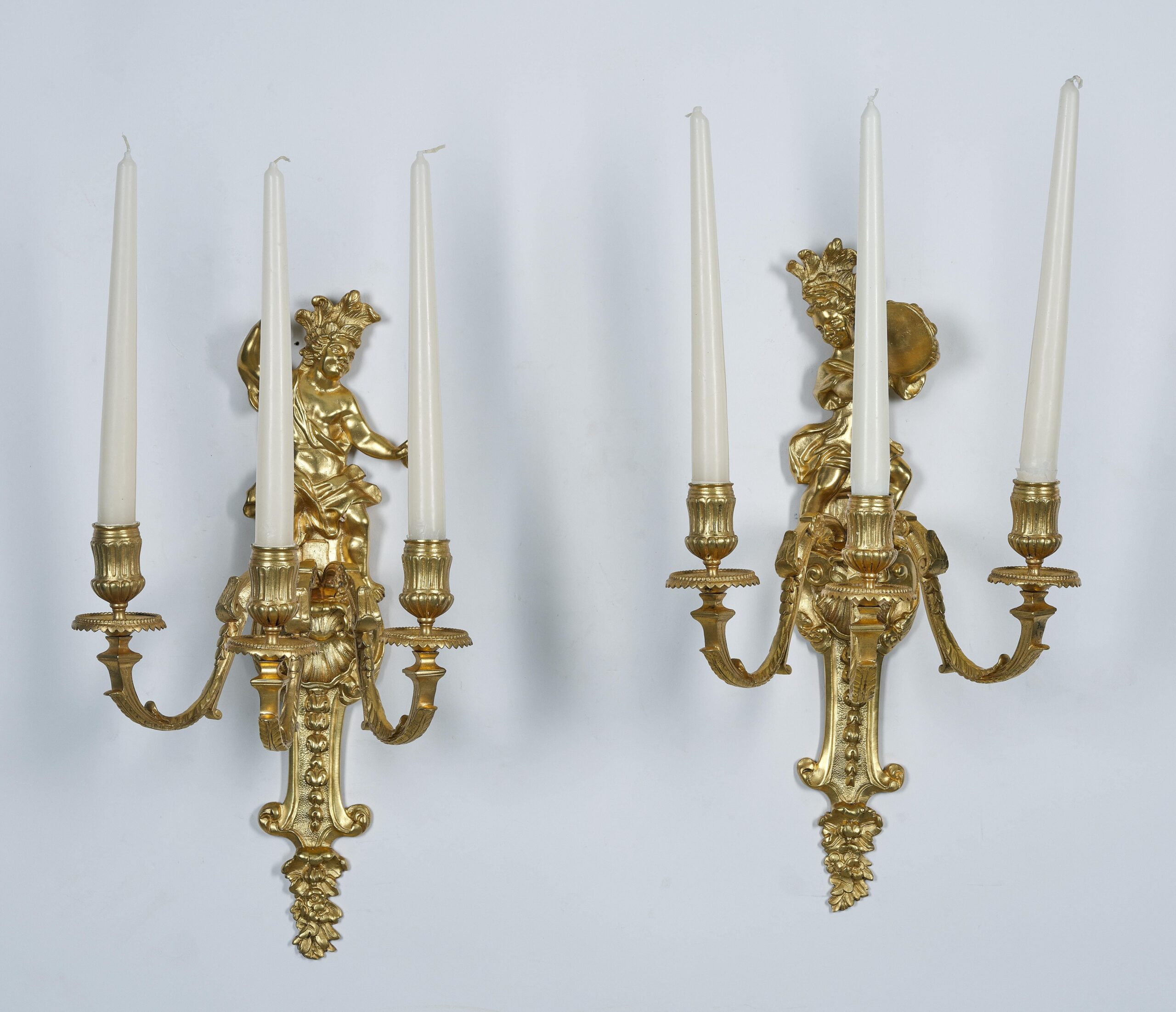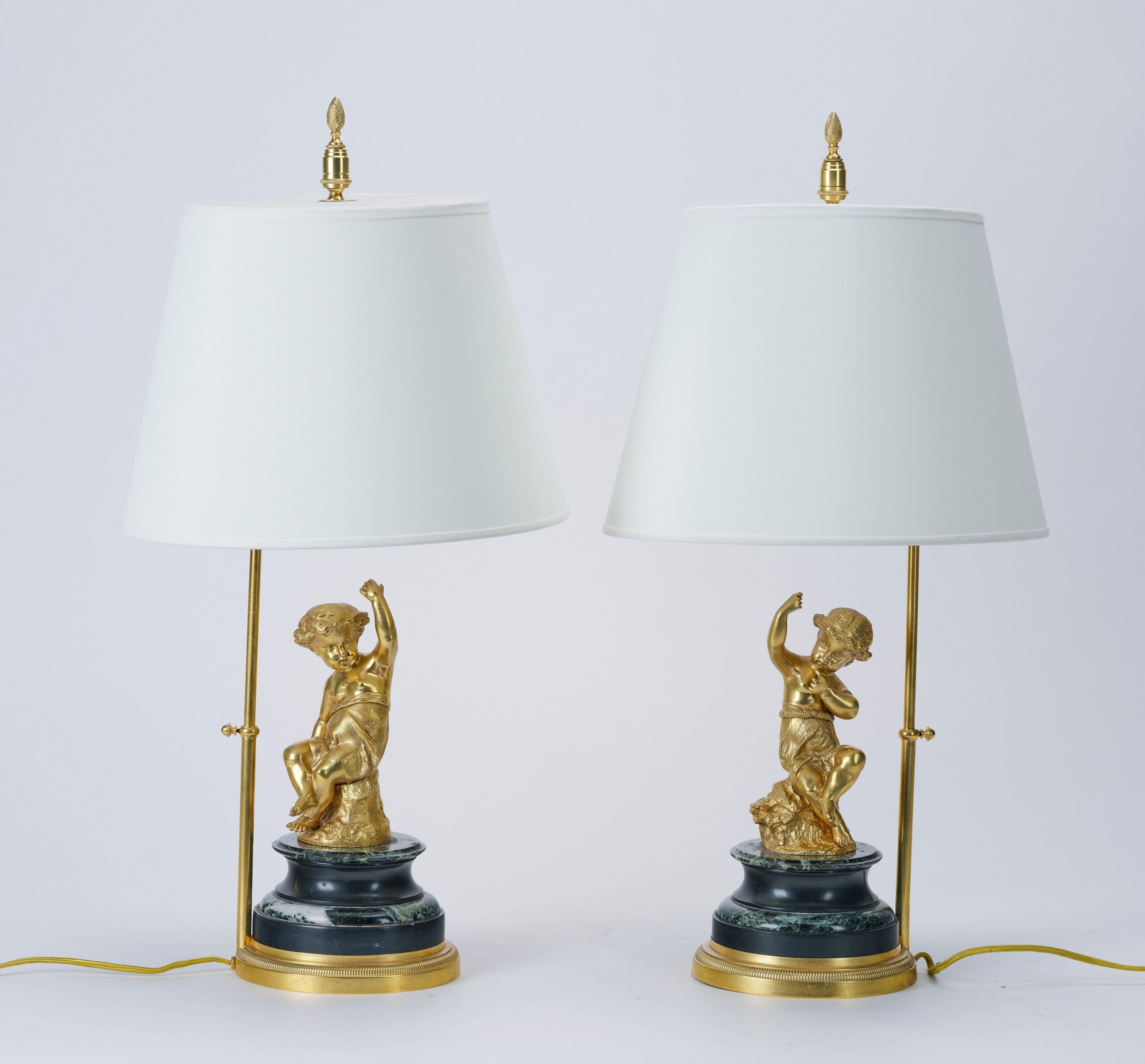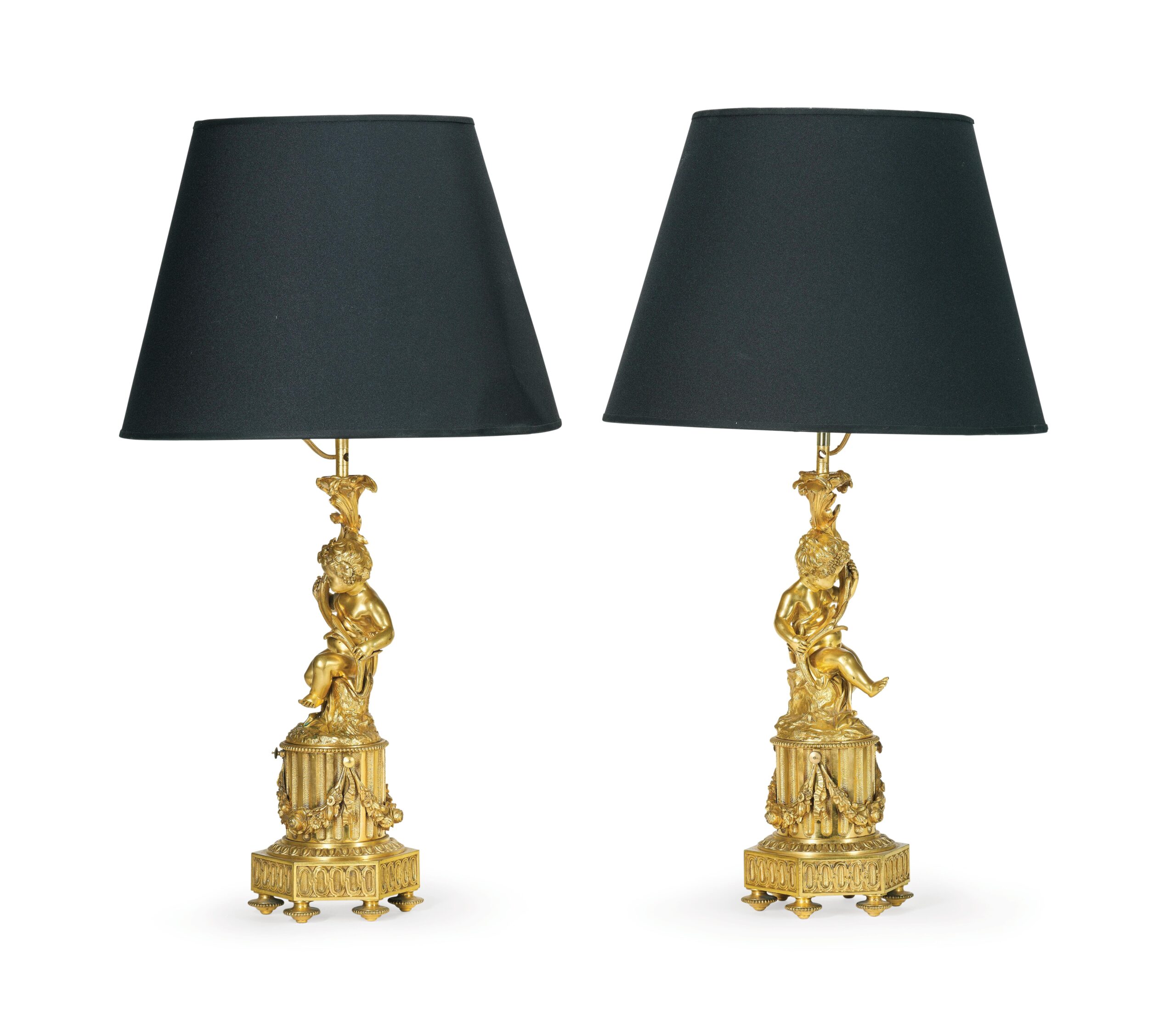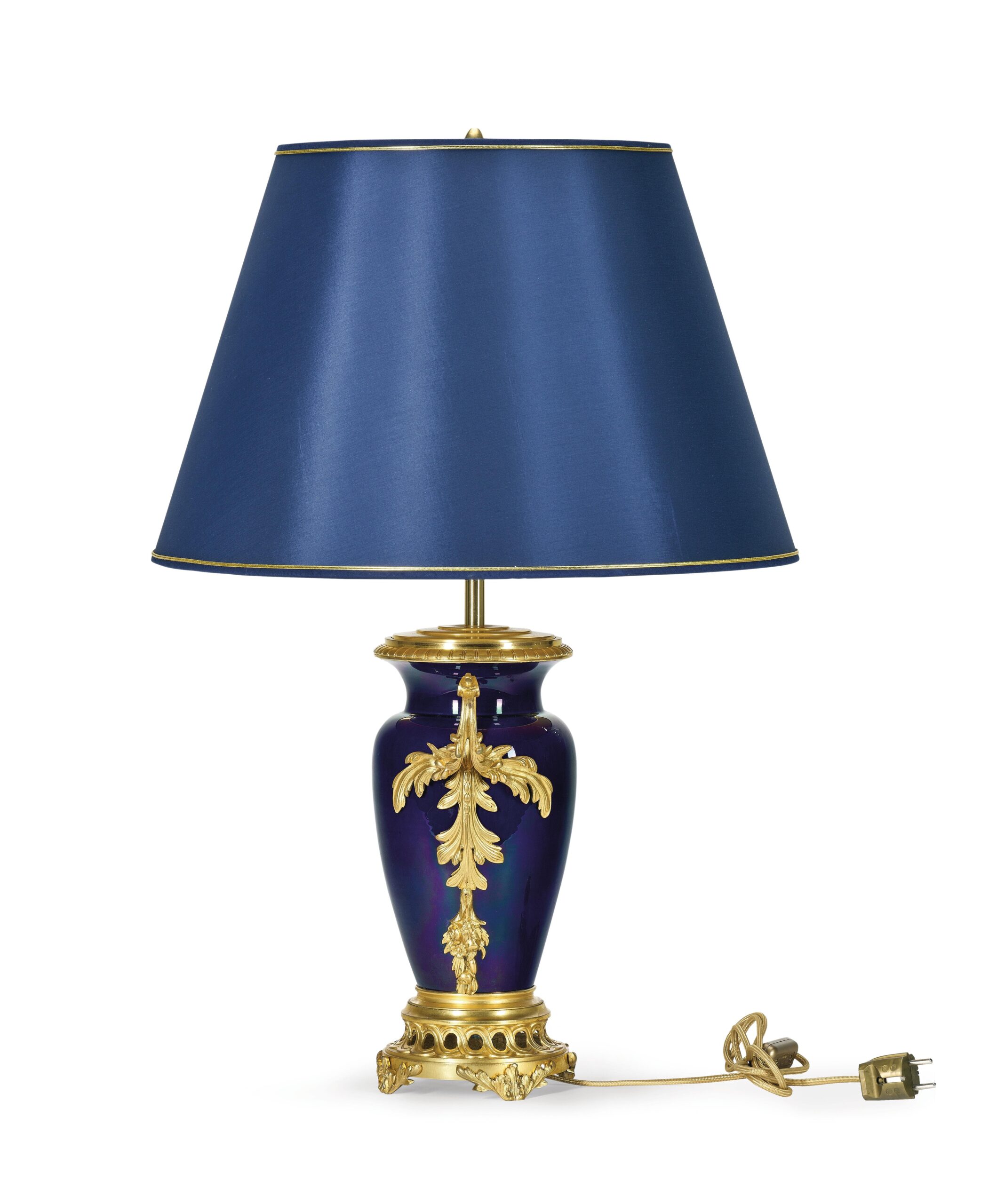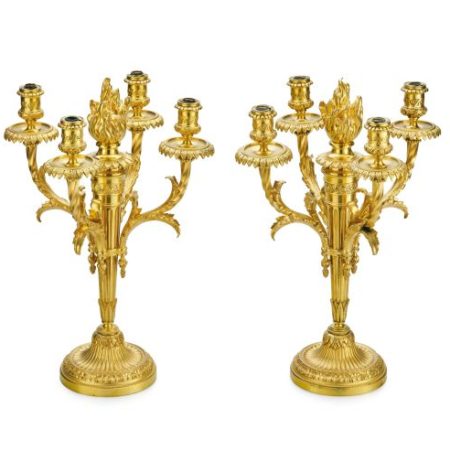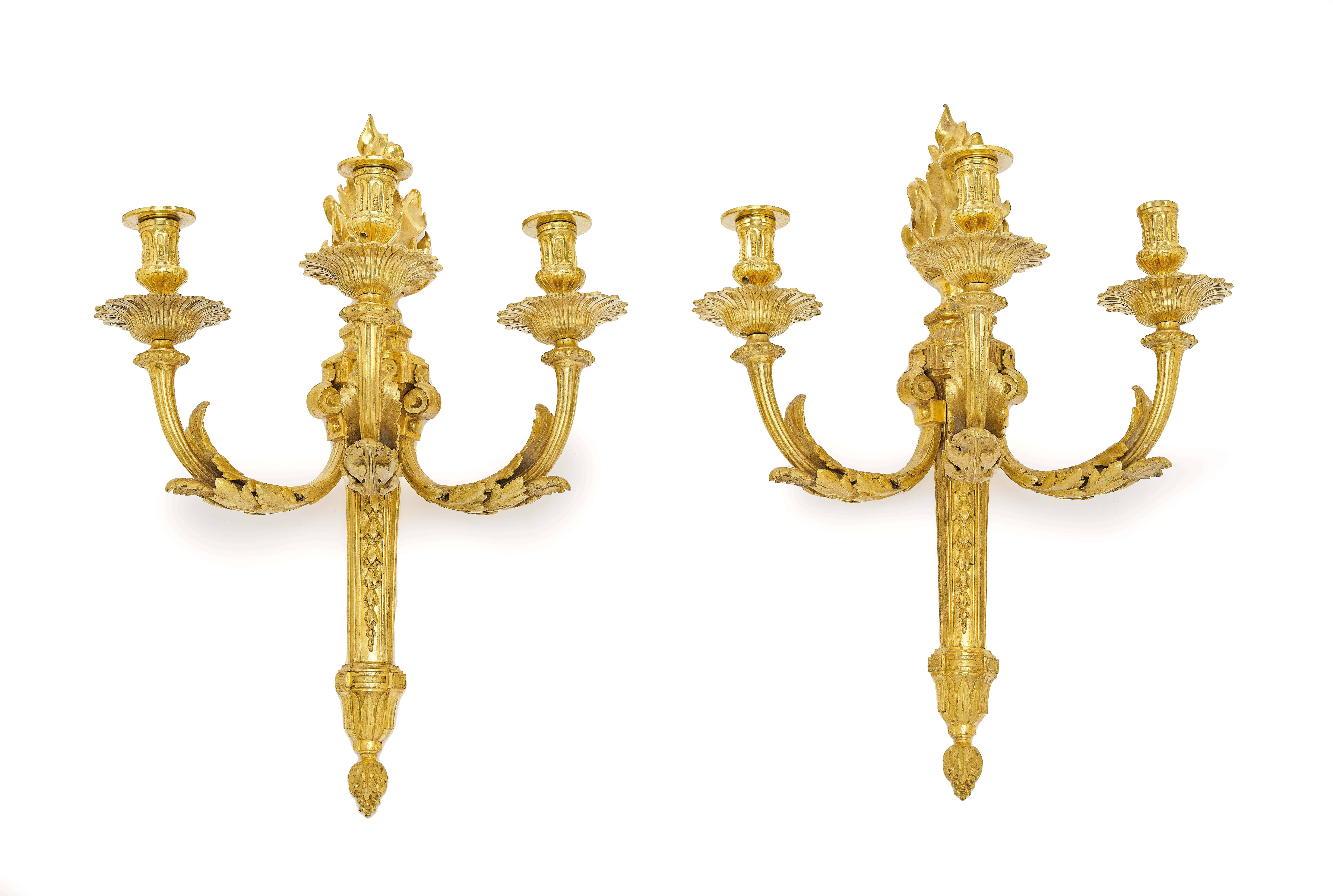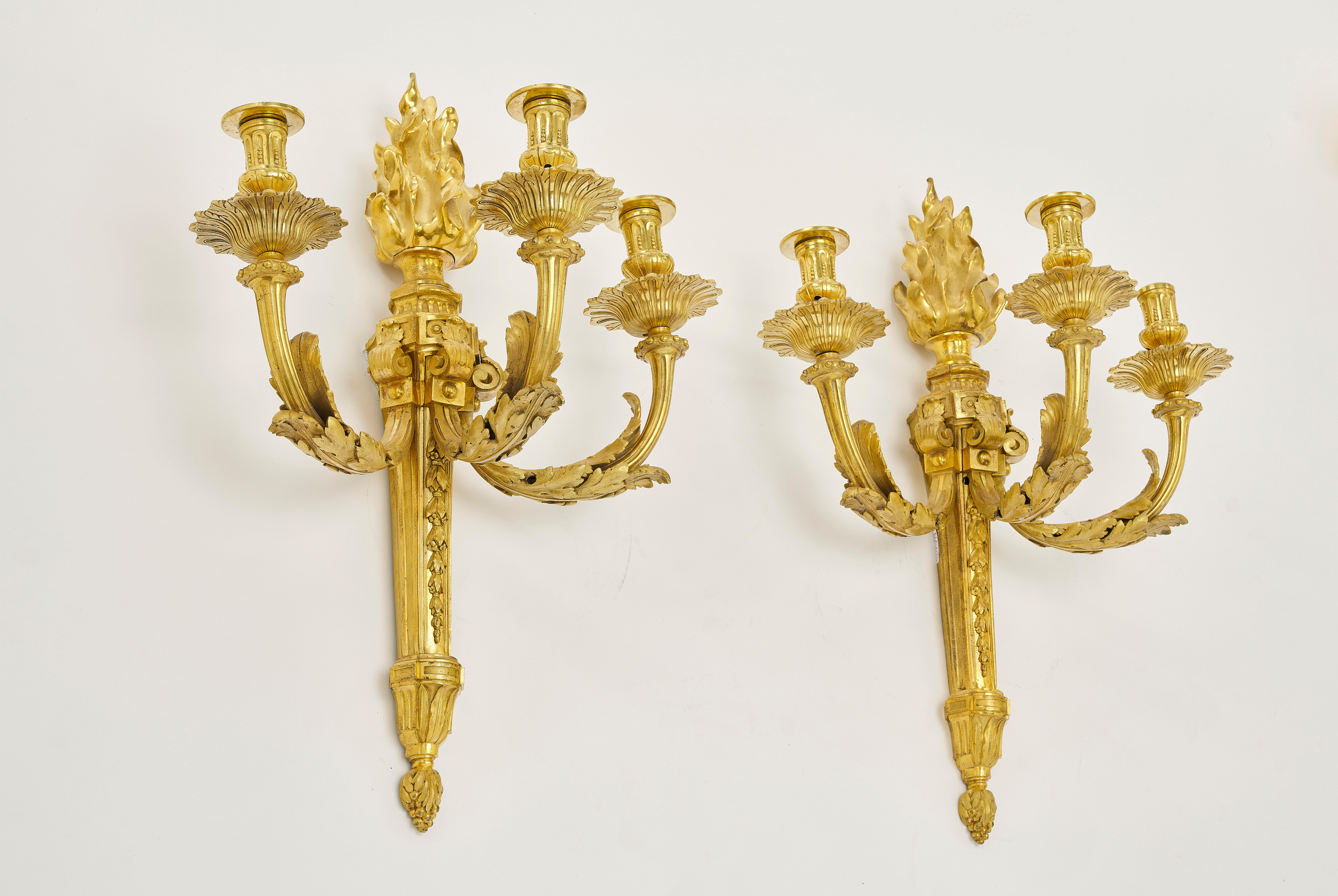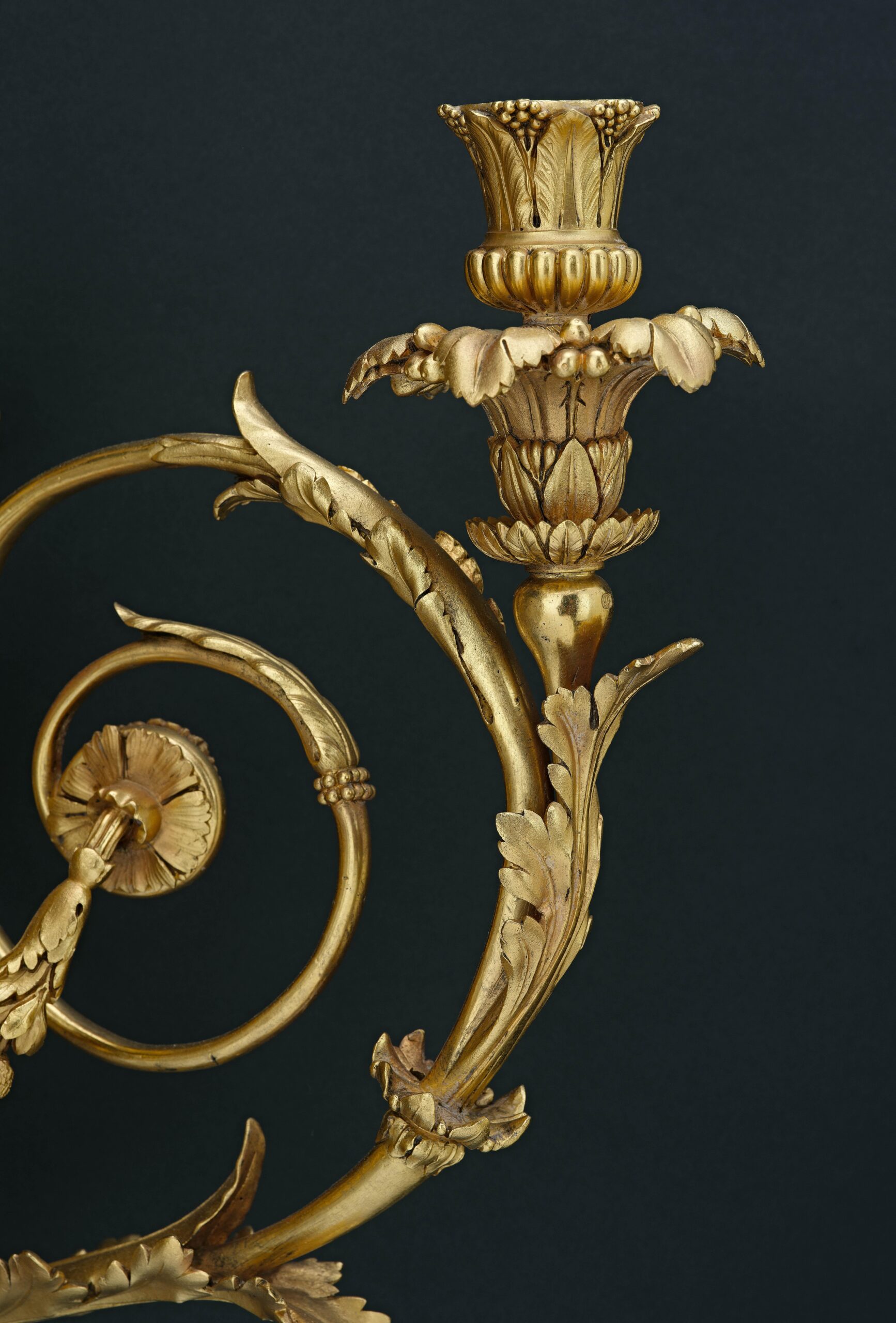
 -34% OffOriginal price was: €5,900.00.€3,900.00Current price is: €3,900.00.
-34% OffOriginal price was: €5,900.00.€3,900.00Current price is: €3,900.00.so-called. “Lampe Bouillotte”, modelled on Clodion in the late 19th century, ornamentally and in the form of putti decorated bronze shaft, gilded, on a moulded marble base decorated with beadwork, electrically mounted with three flames, height-adjustable red matted metal shade, height metal shade, height 72 cm, in good general condition, no guarantee for electrical installation.
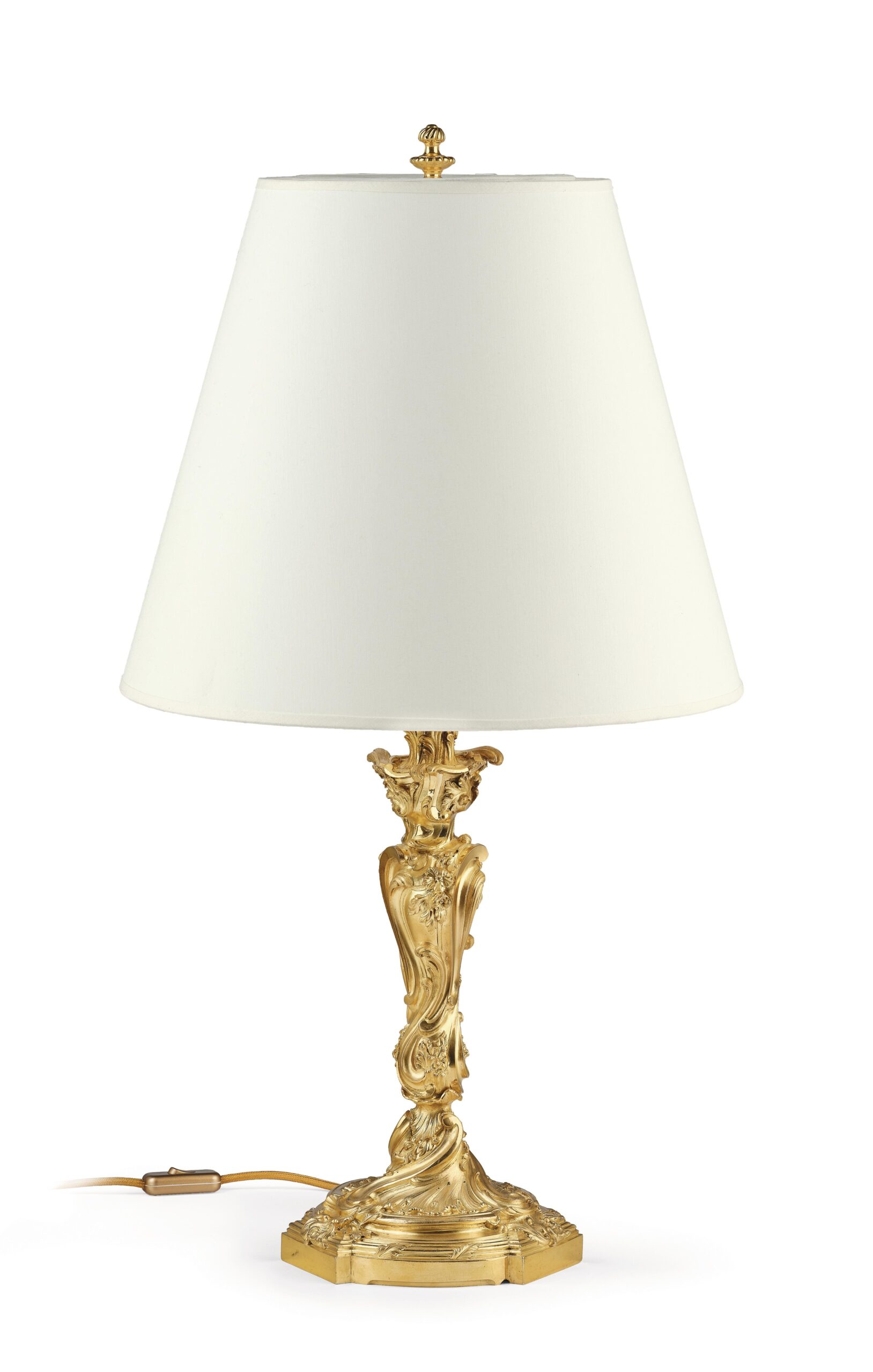
 €2,500.00
€2,500.00Using a candelabra from the second half of the 19th century worked in a later period, bronze, chased and gilded, in the form of rocailles, leaves and flowers as well as ornamental decorations, single-flame electrically mounted, height with shade 82 cm, without guarantee for electric mounting.
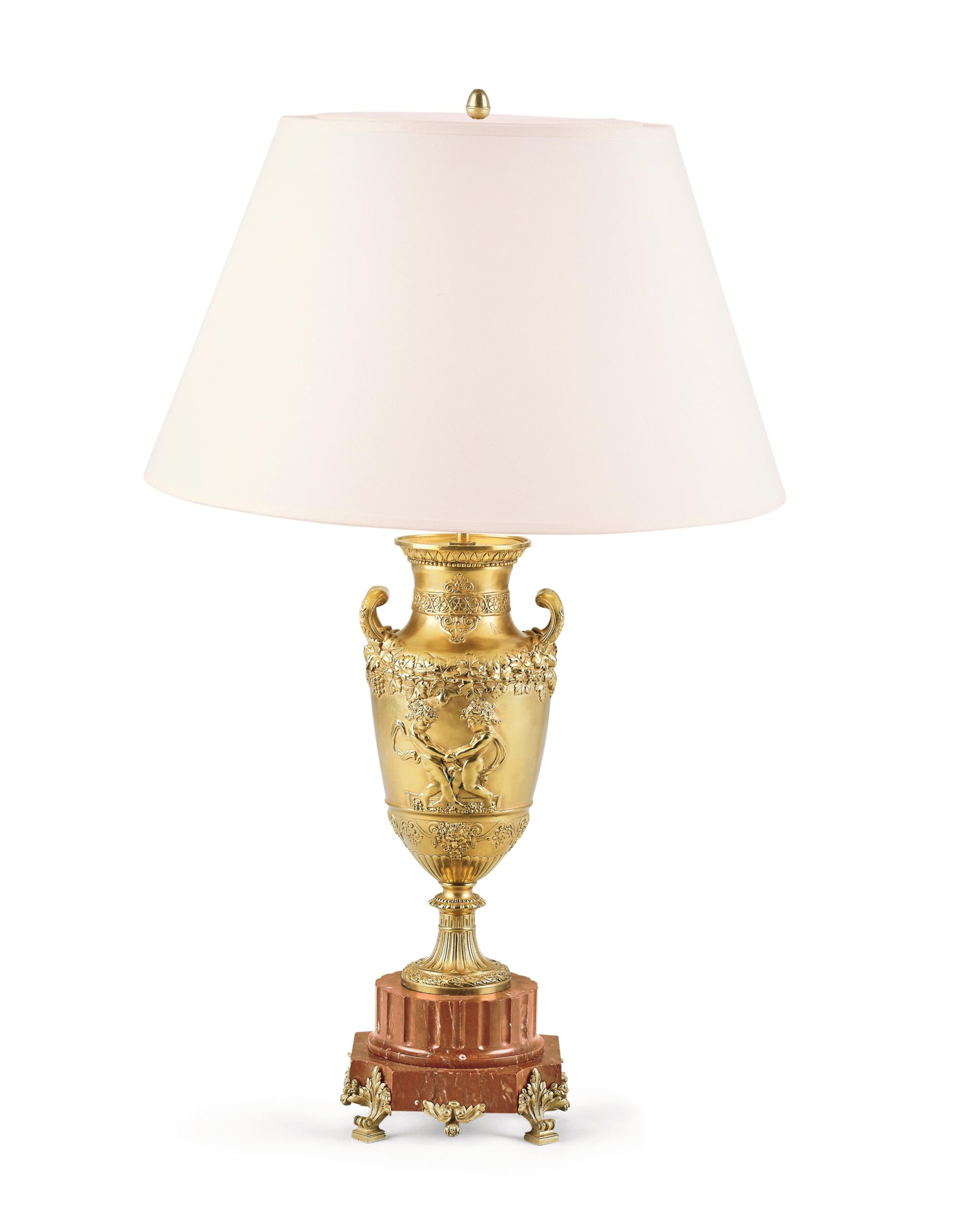
 Sold
SoldLarge table lamp using a French top or ornamental vase from the second half of the 19th century, worked in a later period, bronze, ornamentally decorated as well as in the form of vines and figural, resting on a fluted marble base, single-flame electrically mounted, height with shade approx. 80 cm, beautiful restored condition, no guarantee for electrical mounting.

 -20% OffOriginal price was: €4,900.00.€3,900.00Current price is: €3,900.00.
-20% OffOriginal price was: €4,900.00.€3,900.00Current price is: €3,900.00.using candlesticks from the second half of the 19th century, worked in a later period, bronze shafts richly ornamented and decorated in the form of putti, gilded, single-flame electrically mounted, height with shade approx. 74 cm, beautiful well-kept general condition, no guarantee for electrical mounting.

 €3,200.00
€3,200.00Beautiful pair of girandoles from France, early 20th century. Gilded finely chiselled bronze shafts, partly fluted and partly richly ornamented and in the form of leaves, four flames electrically remounted, upper finial in the form of a flame. Height 46 cm. Beautiful restored condition, without guarantee for electric mounting.
Lighting
The three great cultural achievements of fire for early mankind are cooking, heating and lighting. (W. Schivelbusch)
Until 1879, when Thomas Edison invented the light bulb, mankind made use of the open flame as the only artificial source of light.
The primitive peoples used either pine shavings or torches. The first source that could provide light for a long time was the oil lamp about 15,000 years ago. Although it was gradually replaced by the petroleum lamp in the 19th century, it remained the most important source of light until the invention of the electric light bulb. Since the second century, wax candles were also known, but they burned only for a very short time and their only advantage over torches was that they did not produce smoke. The wax candle as we know it today has been around since the Middle Ages. A “light puller” guild has been known in France since 1061.
Wax became an important commodity. The churches ensured high consumption; candles were not affordable for ordinary people. Under Louis XIV, a wax candle cost the daily wage of a craftsman.
For the noble houses, however, it was a good solution to illuminate the splendid rooms in their palaces with candles. Since the XVII century, the production of candlesticks, candelabra, girandoles, wall appliqués and chandeliers flourished. These objects, mostly made of bronze, silver or gilded wood, became an important part of the classical, antique interior.
These ornate works of art, intended for candles, were often retrofitted with electricity in the XIX century. Fortunately, not all of them. Candles still provide the most pleasant light.
Today’s classical interior design often calls for table lamps. In order to preserve the antique character of an interior, such table lamps can be built using various antique objects such as vases, mantels, candelabras, etc.
We try to find such lamps for our customers or make them ourselves from various antiques. Of course, without endangering the antique substance.


